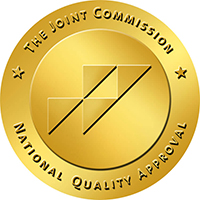Suicide Prevention

Recognizing Suicide Risks
Suicide is a major health crisis. It is the fourth leading cause of death for people ages 35-54 and the second leading cause of death for 10-34-year-olds. Like many mental health disorders, there are symptoms associated with someone contemplating suicide. Early detection and action can help prevent the tragic incident from occurring.
There is no one reason why a person would become suicidal, and risk factors can be internal and/or external - chronic pain, financial hardship, relationship hardship and divorce, history of child abuse or trauma, and any of the following:
- Depression or serious mental illness or family history of depression or mental illness
- Family history
- Previous suicide attempts
- Family history of suicide
- Family history of violence, physical abuse or sexual abuse
- Access to firearms or other weapons at home
- Recent imprisonment or release from jail
- Exposure to other suicides, whether in the media or in a peer group
Symptoms of Suicide:
There are several warning signs that may be communicating a person is contemplating suicide, and should be addressed immediately:
- Talking about wanting to die or wanting to hurt or kill themselves
- Making plans to kill themselves, like purchasing lethal weapons or other harmful methods of self harm
- Talking about feeling stuck in a situation or not having any other solutions
- Feeling intolerable emotional or physical pain
- Talking or thinking about death often
- Self-medicating
- Withdrawal from family, friends and other social events
- Talking about being a burden to others around them
- High risk behavior that could lead to death, including speeding while driving
- A severe change in habits, especially eating and/or sleeping
- Extreme mood swings
- Giving away meaningful possessions, making a will or putting end of life affairs in order
- Saying goodbye to family members or friends, writing “goodbye” notes
Why There is Hope
Responding quickly when you feel a loved one is thinking about taking their own life can prevent suicide from happening. Over the last decade, new global action plans have been developed to help medical professionals, counselors and loved ones intervene when they believe a person to be at risk of commiting suicide. Looking out for the warning signs and carrying out the action steps can help save a life and help the suicidal individual find hope. Family members and friends are on the front line and often play the biggest role in getting someone help. Come join a NAMI group. Just particiapting in a peer discussion will help you or your loved one.
Helping A Loved One - Early Intervention
Suicidal thoughts and behavior are an extreme sign of distress and should never be ignored or treated as a grab for attention. There is never a comfortable time to ask a loved one or peer if they are thinking of taking their own life, but it’s imperative to check in with those who appear to be suffering. The National Institute of Mental Health (NIMH) offers a 5-step actional plan for helping someone who may be experiencing emotional pain and/or considering suicide:
- Ask: Are you thinking about killing yourself? Asking the question does not lead to an increase in suicides or thoughts.
- Keep Them Safe: Preventing access to lethal items or situations is important to preventing the person from commiting suicide.
- Be There: Listen to the individual as they describe what they are going through. Having a conversation about suicide and simply providing a listening ear may reduce the suicidal thoughts, as suggested by some research.
- Help Them Connect: Provide them with the National Suicide Prevention Lifeline or the Crisis Text Line or help guide them towards a trusted family member, friend, spiritual counselor or mental health professional.
- Stay Connected: Studies show that suicide deaths are less likely to occur when a family member, friend or health care professional follows up with the at-risk individual. Keeping in touch with someone who has openly admitted to contemplating suicide is vital and could save a life.
How We Treat It
For individuals who have attempted suicide, psychotherapy techniques can prevent future attempts and help them gain control over their emotions and behaviors. Cognitive behavioral therapy (CBT) helps individuals study their thought patterns and identify alternate, healthy actions they can take instead of hurting themselves. For adolescents, dialectical behavioral therapy (DBT) has been shown to reduce suicidal behavior. A DBT therapist can help the individual see that their thoughts, feelings and behaviors are unhealthy and potentially dangerous. They teach the individual the necessary skills required to face upsetting events or future crises in a more healthy, safe way. Another groundbreaking intervention is Spravato® (esketamine) treatment. Spravato® has been well studied to reduce risk during acute suicidal ideation and help bring relief to chronic depression and anxiety. Spravato® is a temporary and rapid-acting treatment that can restore mental clarity and aid with impulsive or destructive behaviors in addition to alleviating dark, depressive thoughts.
Individuals with suicidal thoughts or behaviors require treatment of other mental health disorders and physical needs, the underlying deficits. Through therapy, nutrition, medication and more, further harm or suffering can be prevented. Healthcare systems now have screening methods in place to predict patients who may be suicidal. Early detection and screening can lead to the saving of thousands of lives yearly.
What Does Ongoing Care Look Like
Life after attempted suicide can be a dark time for the individual, but there is light for those who seek support. Finding support in family, friends or trusted spiritual leaders and mental health professionals can be a saving grace. Statistics show that following up with somebody who has had suicidal thoughts or a suicide attempt can prevent them from trying again in the future. If you are interested in some of the services that Solstice Pacific provides, please check out our PHP and IOP pages. Before coming in to visit us, we recommend completing this short assessment so that we’ll get to know you. A short phone call to a loved one could save a life, so take the time and check in.
Symptoms of Suicide:
There are several warning signs that may be communicating a person is contemplating suicide, and should be addressed immediately:
- Talking about wanting to die or wanting to hurt or kill themselves
- Making plans to kill themselves, like purchasing lethal weapons, drugs or other harmful methods of self harm
- Talking about feeling stuck in a situation or not having any other solutions
- Feeling intolerable emotional or physical pain
- Talking or thinking about death often
- Using substances, like alcohol or drugs, more often
- Withdrawal from family, friends and other social events
- Talking about being a burden to others around them
- High risk behavior that could lead to death, including speeding while driving
- A severe change in habits, especially eating and/or sleeping
- Extreme mood swings
- Giving away meaningful possessions, making a will or putting end of life affairs in order
- Saying goodbye to family members or friends, writing “goodbye” notes




